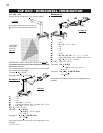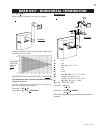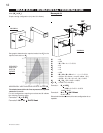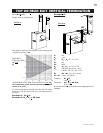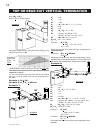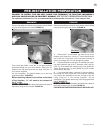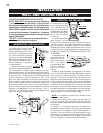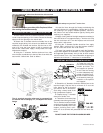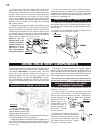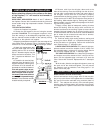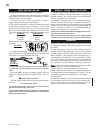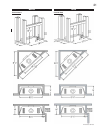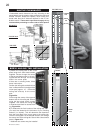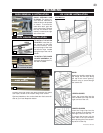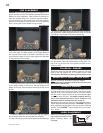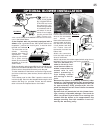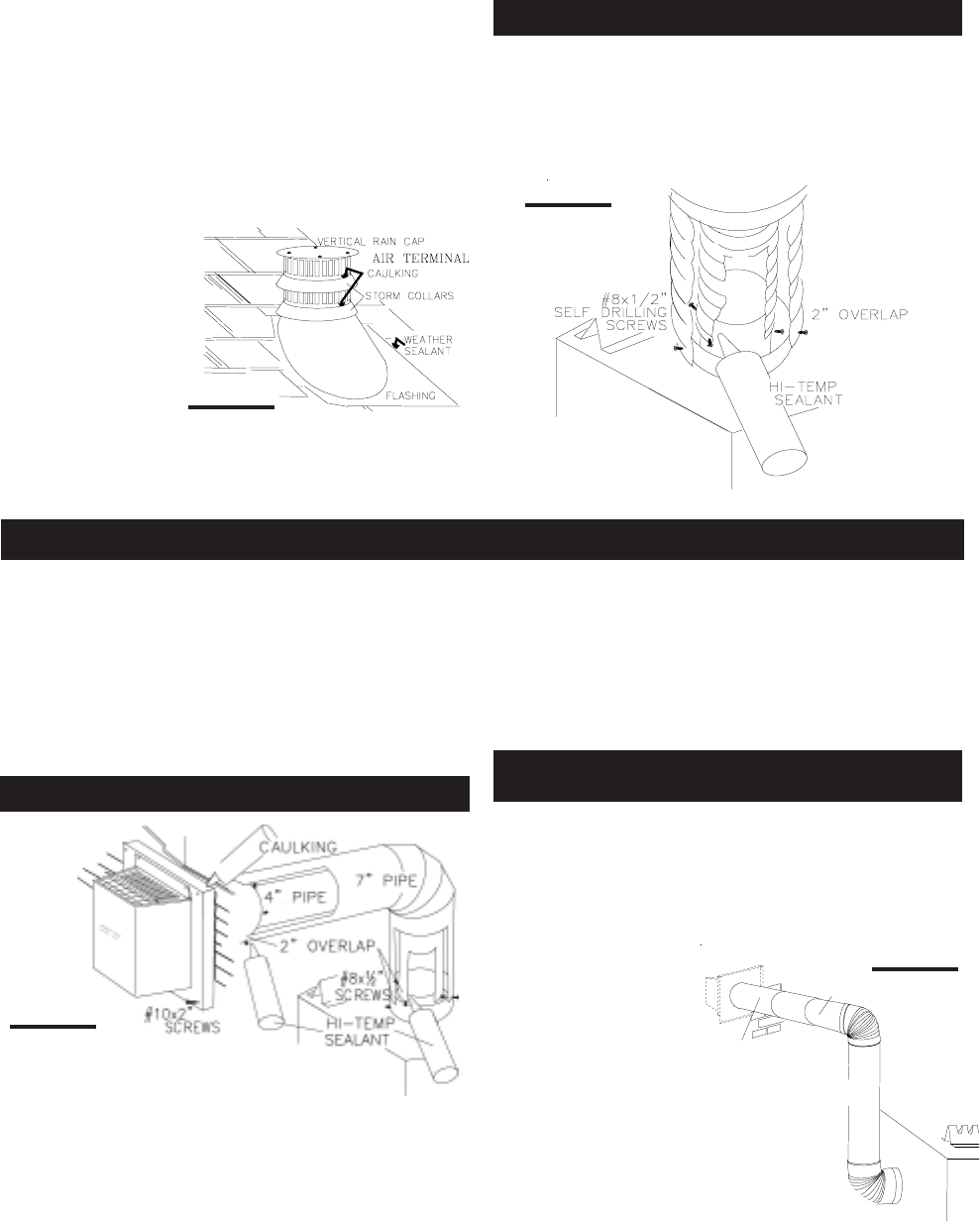
18
W415-0210 / E / 06.25.03
The vent system must be supported approximately every 3
feet for both vertical and horizontal runs. Use Wolf Steel
vent spacers W615-0033 or equivalent every 3 feet and
either side of each elbow to maintain the minimum 1¼"
clearance between the outer and inner vent pipes. Use
Wolf Steel support ring assembly W010-0370 or equiva-
lent noncombustible strapping to maintain the minimum
clearance to combustibles for both vertical and horizontal
runs.
1. Move the fireplace into po-
sition. Measure the vent length
required between terminal and
fireplace taking into account the
additional length needed for the finished wall surface and any
1¼" overlaps between venting components.
2. Apply high temperature sealant to the outer edge of the 4"
inner collar of the fireplace. Attach the first vent component and
secure using 3 self tapping screws. Repeat using 7" piping.
5. Remove nails from the shingles, above and to the
sides of the chimney. Place the flashing over the air termi-
nal and slide it underneath the sides and upper edge of the
shingles. Ensure that the air terminal is properly centred
within the flashing, giving a 3/4" margin all around. Fasten
to the roof. Do not nail through the lower portion of the
flashing. Make weather-tight by sealing with caulking. Where
possible, cover the sides and top edges of the flashing
with roofing material.
6. Apply a heavy bead of weatherproof caulking 2 inches
above the flashing. Slide the storm collar around the air
terminal and down to the caulking. Tighten to ensure that a
weather-tight seal between the air terminal and the collar
is achieved. Attach the other storm collar centred between
the air intake and the air exhaust slots onto the air terminal.
Tighten securely. Attach the vertical rain cap.
Spacers are at-
tached to the 4" inner
flex liner at predeter-
mined intervals to
maintain a 1-1/4" air
gap to the 7" outer
liner. These spacers
must not be removed.
3. Holding the air terminal (lettering in an upright, readable
position), insert into both vent pipes with a twisting motion to
ensure that both the terminal sleeves engage into the vent
pipes and sealant. Secure the terminal to the exterior wall and
make weather tight by sealing with caulking (not supplied).
The air terminal mounting plate may be recessed into the
exterior wall or siding by 1½", the depth of the return flange.
1. Follow the instructions for "Horizontal Air Terminal In-
stallations", items 1 to 3.
2. Continue adding components alternating inner and
outer venting. Ensure that all 4" venting and elbows have
sufficient vent spacers attached and each component is
securely fastened to the one prior. Attach the 4" telescopic
sleeve to the vent run.
Repeat using a 7" tel-
escopic sleeve. Secure
and seal as before. To
facilitate completion, at-
tach 4" and 7" couplers
to the air terminal.
3. Install the air terminal. See item 3 of
the Horizontal Air Terminal Installation.
Extend the 4" telescopic sleeve; connect
to the air terminal assembly. Fasten with
self tapping screws and seal. Repeat
using the 7" telescopic sleeve.
FIGURE 33
TELESCOPIC SLEEVE
VENTING
AIR TERMINAL
20"
COUPLER
FIGURE 34
FIGURE 32
FIGURE 31
7. If more liner needs to be used to reach the fireplace,
couple them together as illustrated. The vent system must be
supported approximately every 3 feet for both vertical and
horizontal runs. Use noncombustible strapping to maintain a
clearance to combustibles of 1".
1. Install the 4 inch diameter aluminium flexible liner to
the fireplace. Secure with 3 screws and flat washers. Seal
the joint and screw holes using the high temperature seal-
ant provided.
2. Install the 7 inch diameter aluminium flexible liner to
the fireplace. Attach and seal the joints.
FIREPLACE VENT CONNECTION
EXTENDED HORIZONTAL AND CORNER
AIR TERMINAL INSTALLATION
USING RIGID VENT COMPONENTS
HORIZONTAL AIR TERMINAL INSTALLATION



